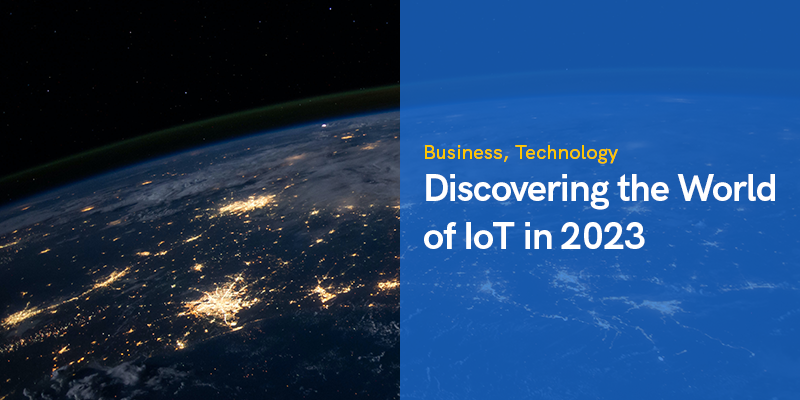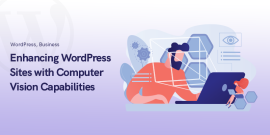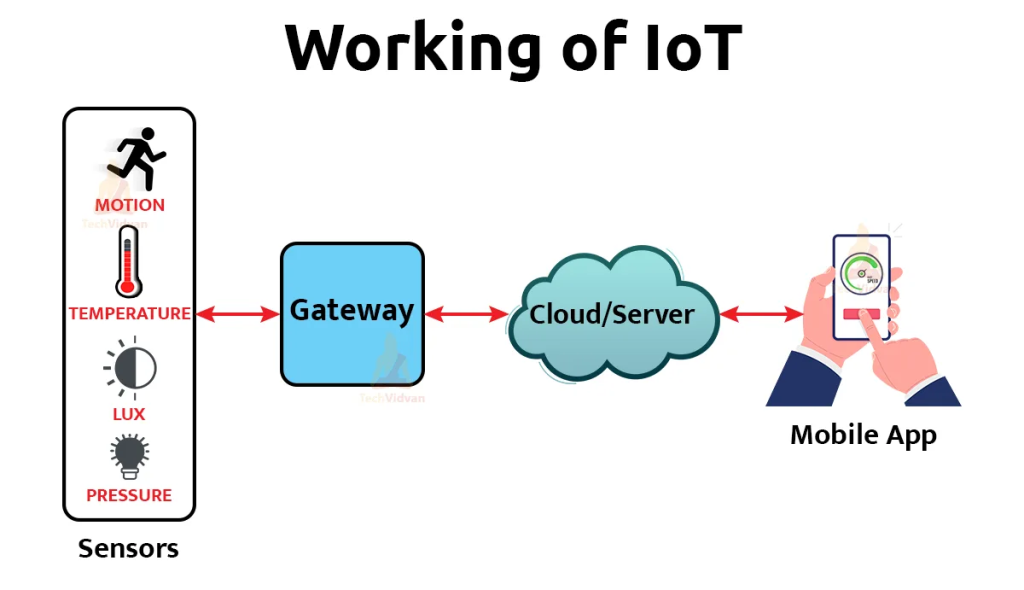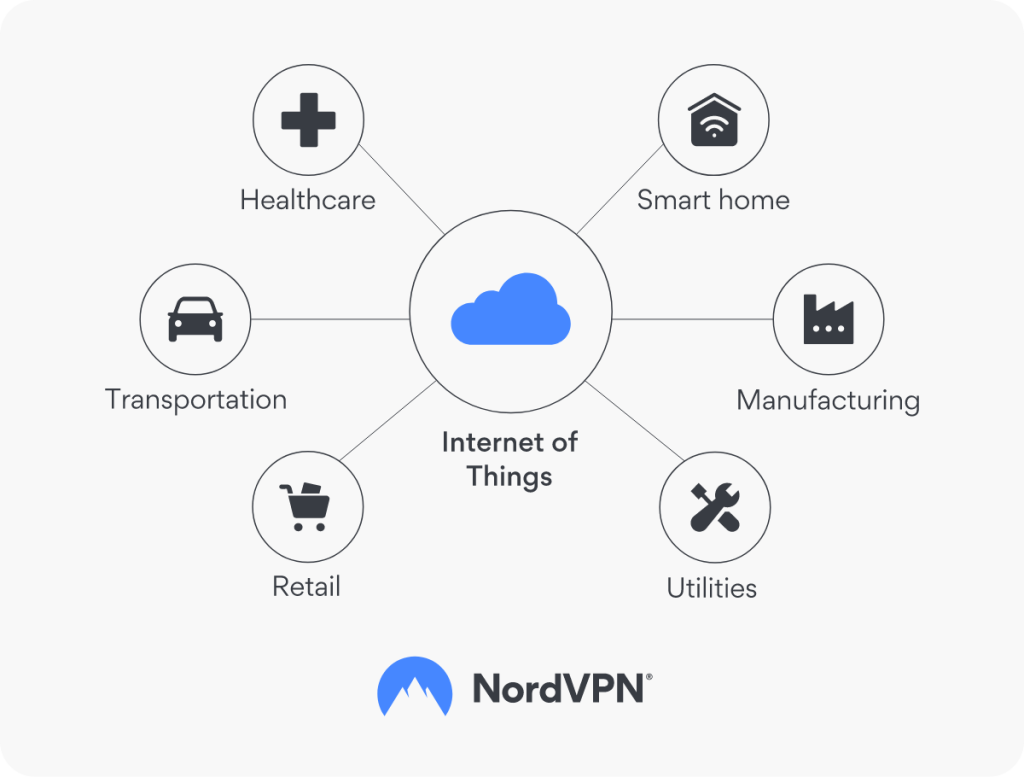
Discovering the World of IoT in 2023
The Internet of Things is an emerging set of technologies with a simple and ambitious goal – to make the world smarter. No, you aren’t reading a piece of science fiction here. If you’ve ever used the remote controller to light your room, you’re closer to IoT than you think. And, as you’ll see, you can participate in this intelligence revolution among devices!
Yes, remote control features for various devices, from TV to air conditioning and chandeliers, are predecessors of IoT. However, it’s not enough: the device must be connected to a broader network that will proceed with the information and direct how the device must behave.
You can contact IoT app developers to ensure you can create your own IoT app for controlling a network of intelligent devices. Here, however, you’ll probably develop not only software but hardware too. Let’s see which functions are required from such an application and how IoT realizes its mission.
World of IoT in 2023
Connecting the World
The main purpose is to make the world intelligent, so in the potential, there can be a worldwide network of smart things connected with each other: a true Internet of Things. For now, however, it resembles the Internet in the 1980s: a lot of small networks with basic functionality.
Let’s see how the world becomes interconnected.
First, the device should have a microcomputer embedded in it and connected to its hardware parts. It enables connecting to the local network or a wider Internet.
Then, they usually have sensors or are connected to other devices with them. Temperature, humidity, pressure, motion trackers, medical sensors, detectors, image proceeding – there is a wide variety of them, but we mentioned ones that you’d probably face first.
A reliable business internet service provider can ensure these devices remain connected seamlessly.
Cloud servers with computational facilities proceed with all these data and send them to a mobile app or other devices in the network, regulating their activity. Artificial intelligence may be implemented here to control everything automatically.
For example, an aws iot solution can offer robust and scalable options for managing a network of interconnected devices, ensuring data integrity and security.
A mobile IoT app with control features and statistics enables customers to maintain a smart network of devices/things and use them.
At all stages, there are strong privacy and safety measures to protect against data breaches and unauthorized access. As you’ll see, it’s a key point here.
If required, additional features or APIs may be connected to improve each of the functions above: from data collecting and proceeding to privacy.
Examples
To not overload you and not limit your creativity, let’s see three of the most used examples of IoT apps.
Industry networks and sensors are widely used to control production plants, increasing their efficiency or activity on roads, such as road lights, and optimizing the routes.
Tracking systems to monitor the patient’s condition in the hospital, for example, or track a person's activity are becoming increasingly integral to healthcare and personal fitness. Yes, if you use MyFitnessPal or something like that with your fitness bracelet, you’re one step closer to the IoT future. Understanding how to create a fitness app can provide insights into leveraging these technologies to enhance device connectivity and data accuracy, improving overall health management through your app. Cheers,
Smart houses are one of the most common applications, including smart locks, reacting only on their owner, climate control, alarm systems against thieves and calamities, and controlling TV, computers, and stereo. There are also less typical examples, such as smart toilets, enabling the optimization of all spheres of life. For those interested in understanding more about the infrastructure behind managing IoT devices, you can explore what is IoT device management here.
Benefits
If their benefits are still not obvious, let’s highlight a few.
Efficiency of the IoT apps is in their optimization, automatization, and smart control based on the conditions set.
Reducing costs, as they reduce the time and workforce needed to complete a task.
Increased convenience due to the ability to control your home or manufacturing using your smartphone instead of doing it manually.
Decision-making can be facilitated by smart interfaces of the IoT cloud computing servers. From the basic
So, let’s see where IoT is usually currently utilized.
Industries
Healthcare utilizes smart networks for their hospitals to monitor patients’ conditions, facilitate paperwork, and make better decisions.
Manufacturing and building use them to increase performance and limit possible risks for workers. When a cloud MRP system is combined with IoT, it further increases the productivity of manufacturing businesses.
Transportation can be optimized by planning the best routes, tracking cars and parcels, and controlling traffic lights.
Agriculture uses sensors and automatized systems for ensuring the best conditions for plant growth and development.
Personal usage includes smart houses and body condition monitoring, which were already discussed above.
There are only the most relevant industries. You can see more examples above. Potentially, IoT apps can make smarter each object you know and see around: it just needs to add sensors, microcomputers, and cloud server connection for data proceeding.
However, let’s now go to the darker side of all Internet, be it your usual one or the IoT. All interconnected systems may be cracked, and if hacking the computer can, at most, steal your data and money, hacking the whole device can lead to casualties and even calamities.
Safety First
All things which are connected to the Internet share the vulnerabilities of all networks, and it’s much more dangerous than it may seem at first.
- Data privacy is crucial, as IoT apps contain a lot of personalized data. They include names, addresses, and often sensitive information about body conditions. If a malefactor would access them, it may cause problems.
- Device vulnerability is a much more dangerous problem. An intelligent thing is controlled by programmed circuits, and the one who’ll take control of them will control the thing. Cyberpunk future, in which all the world may be cracked, is not far away…
Imagine, just for example, that you have a smart climate control system in your house: if someone hacks it, they will be able to freeze you or even cause a short circuit in your house. And what if they’ll take control over your home robot, who can beat you or even kill?
Large-scale networks are extremely dangerous for this purpose. It is one of the key reasons for the slow IoT adoption. Imagine if someone would crack such a large-scale IoT network and obtain control, for example, over the automatized chemical plant. It can pollute the whole area, and the malefactor will obtain access to potentially hazardous and restricted substances.
Challenges
Let’s see which challenges you’ll probably face during the development.
Safety: as mentioned, it is the foremost point for IoT networks. If a malefactor hacks a computer, they can erase or steal your data, but if they hack your smart device, they may directly harm or even potentially kill you. So, robust multi-layered encryption must be present, and the Internet of Things will certainly be not as open as the ordinary Internet.
Complexity of the IoT app development is large: it is much harder to proceed with them than with many other apps. You need to consider sensors, networks, and hardware engineering for a successful result.
Compatibility is another problem, which requires creating
Quality control should also be multi-leveled: on a level of hardware, software, networks, and security.
Costs of IoT device development are rather high and require attracting large investments.
Lastly, unemployment may follow as such devices will be more and more implemented, as in the case of all emerging technologies.
Future: The Intelligent World?
So, let’s bring this all together…
The article about IoT seems like a futuristic story, but it is already here. Open your local tech online store and type something like “smart home gadgets,” and you’ll see.
It can greatly improve the life level: despite requiring initial investments, it will facilitate so many processes that the overall benefit will be positive. People will enjoy the optimization of their life and reduce their work amount without losses.
Industries will increase their production without the necessity to risk their workers. Lastly, modern network protocols, such as 5G, will ensure that networks of things will work fast.
The development requires complex multidisciplinary skills, so you’ll need to organize several teams to step into the future. Remember: safety first, as the cracked hardware may someday become a robot killer.
So, how can you develop your own IoT app? Consider starting from the encrypted network and servers, which can perform complex computations.
Then, take some common devices and things, used for various purposes, and think about how they can be modified and optimized. Say your entire home is connected to your smartphone’s system. You must know how to track a phone’s location as a precaution so it doesn’t fall into the wrong hands. Apply sensors and other pieces of hardware which can implement your ideas.
Lastly, connect them to the network, develop an application for control, and ensure encryption and data safety on all levels. By using these steps, you can put your hand into the creation of intelligent work – and help it not to become a cyberpunk dystopia.
Recommended Posts

Top 6 Free Windows Screen Recorders for Your Personal Blog
February 8, 2024

Virtual Meeting 101: Conduct Meetings Like a Pro
January 1, 2024

Enhancing WordPress Sites with Computer Vision Capabilities
December 27, 2023


